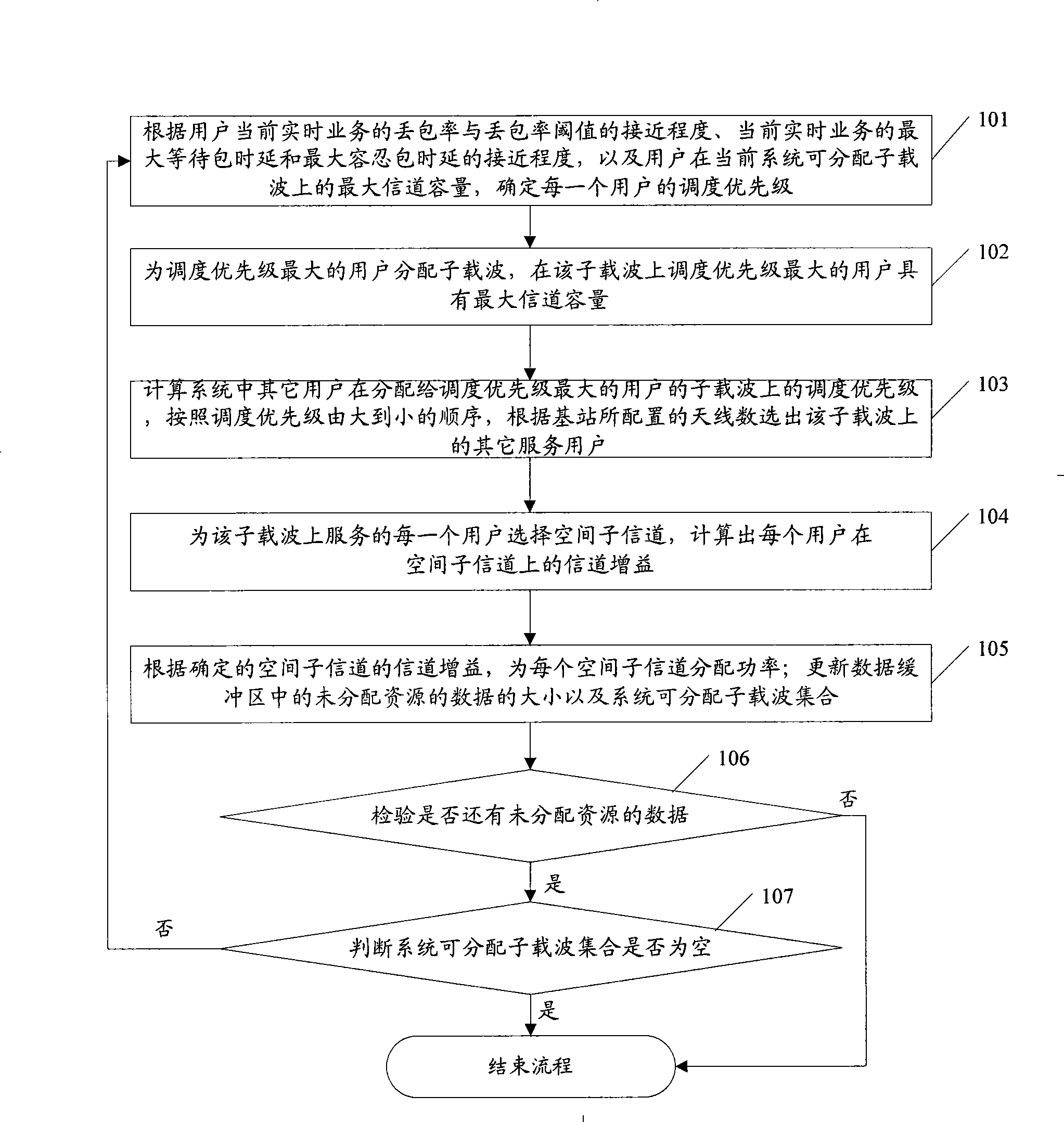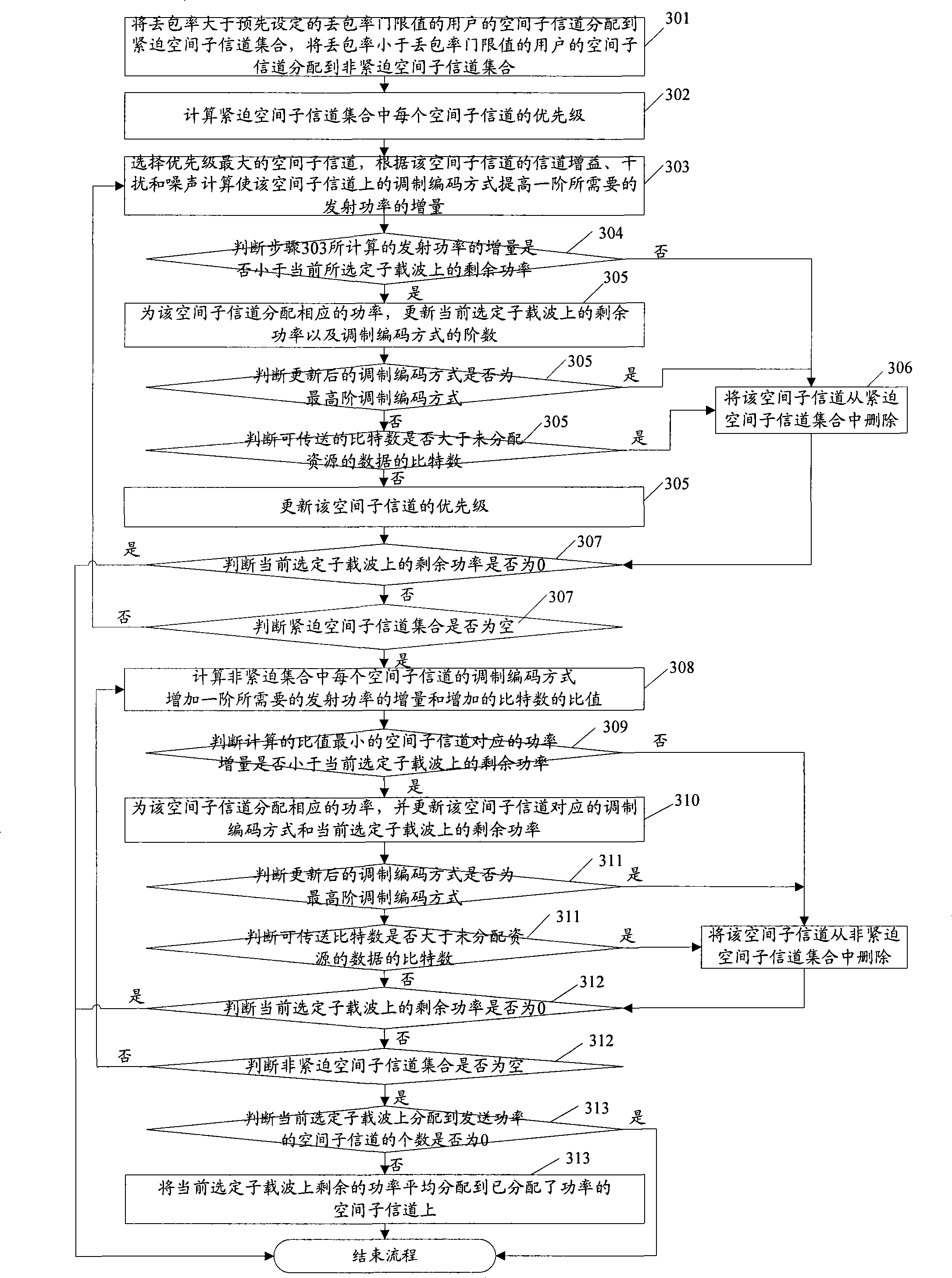Resource distribution method and apparatus
A technology for allocating power and users, applied in the direction of selecting devices, preventing/detecting errors through diversity reception, electrical components, etc., can solve problems such as data transmission failure, and achieve the effect of improving throughput
- Summary
- Abstract
- Description
- Claims
- Application Information
AI Technical Summary
Problems solved by technology
Method used
Image
Examples
specific example
[0041] A specific example: the current system has three subcarriers that can be allocated, namely subcarriers 1, 2 and 3, assuming that user 1 has different channel capacities on these three subcarriers, and the channel capacity on subcarrier 3 is the largest , then the scheduling priority of user 1 is determined according to the channel capacity of user 1 on subcarrier 3 . Assuming that the method described in step 101 is used to determine that user 1 is the user with the highest scheduling priority, then the subcarrier 3 with the largest channel capacity for user 1 is allocated to user 1 .
[0042] Step 103, calculate the scheduling priority of other users in the system on the subcarrier allocated to the user with the highest scheduling priority, and select the subcarrier according to the number of antennas configured by the base station according to the order of scheduling priority from large to small other service users.
[0043] In this step, other users are selected on ...
PUM
 Login to View More
Login to View More Abstract
Description
Claims
Application Information
 Login to View More
Login to View More - R&D
- Intellectual Property
- Life Sciences
- Materials
- Tech Scout
- Unparalleled Data Quality
- Higher Quality Content
- 60% Fewer Hallucinations
Browse by: Latest US Patents, China's latest patents, Technical Efficacy Thesaurus, Application Domain, Technology Topic, Popular Technical Reports.
© 2025 PatSnap. All rights reserved.Legal|Privacy policy|Modern Slavery Act Transparency Statement|Sitemap|About US| Contact US: help@patsnap.com



